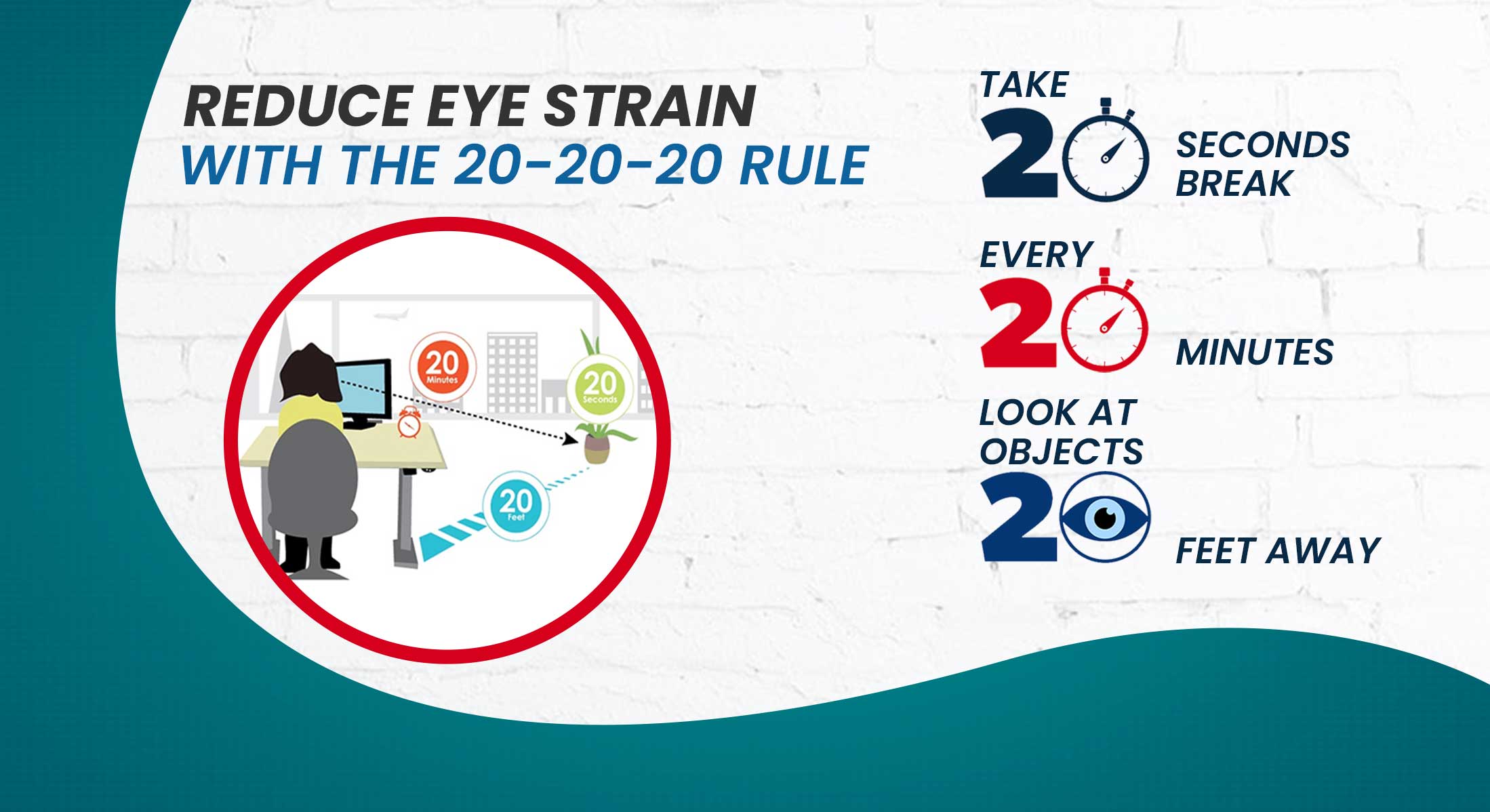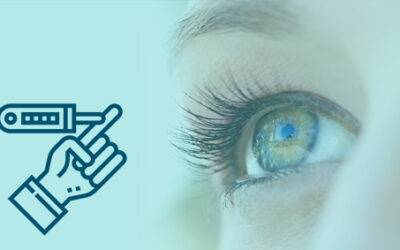10 Eye Care Tips for People Who Use Computers at Work

While working on a computer screen, your eyes need to focus continuously on the text or images, and this can strain your eye muscles. Many people also forget to blink or don’t blink enough when using computers. This reduced blink rate can dry out the eyes and contribute to redness and irritation. Poor workstation ergonomics, improper lighting in the workspace, and the flicker, glare and contrast of the computer screen can take a further toll on the eyes. The combination of eye and vision problems from extended computer use can be extremely uncomfortable. If severe, it can also affect the quality of work or lower the overall work productivity as it reduces the number of hours a person can work effectively.
While taking some time off from the computer can give your eyes the rest they need and reduce some of the symptoms, most people cannot afford to stop using computers at work. So what is the long-term solution to protect your eyes from computer-related damage at work? Making small changes to your work environment and incorporating healthy eye habits can help keep your eyes and vision system comfortable when viewing computer screens for long hours.
Protect your eyes from digital overload by following some simple precautions
T he multitude of visual problems associated with Computer Vision Syndrome can be prevented or reduced by following certain precautions. If your eyes are struggling from constant exposure to digital screens, here are some tips that can help protect your eyes from Computer Vision Syndrome:- Take regular breaks from the computer screen – Reduce eye fatigue by taking a 15-minute break after 2 hours of continuous screen use or a 5-minute break for every 30 minutes of work.
- Follow the 20-20-20 rule to prevent eye fatigue – After 20 minutes of computer viewing, look 20 feet into the distance, for 20 seconds.
- Remember to blink your eyes more often – This can prevent dryness and irritation. Consult an eye specialist about artificial tear drops that can be used to keep your eyes comfortable and moist during the workday.
- Adjust your workstation (desk and chair) – so that your eyes are at the recommended viewing distance (an arm’s length) from the computer monitor and your gaze is at eye level, or slightly below the top of the computer screen. This will keep your eyes comfortable.
- Blue light protection – Use prescription glasses or computer glasses with UV filters and anti-glare coating to block UV rays produced by computer monitors and glare produced by fluorescent lighting. You could also use anti-glare screen filters or reduce the colour temperature of your display to cut down on the amount of blue light emitted by the monitor.
- Computer display settings – minimise eye strain and fatigue by modifying the display setting of your computer monitor. Adjust the brightness, backlight, contrast, and resolution of the computer screen to a level that’s comfortable for you. Upgrade to a high-resolution LCD monitor that does not flicker and is gentler on the eyes, and enlarge the font size so that you can read text comfortably.
- Proper lighting can reduce eye strain – Too much natural or artificial light can increase glare on your computer screen. For comfortable viewing, ensure that windows and other light sources are not directly behind or in front of you, or use drapes /blinds on windows. Use floor lamps to provide indirect lighting instead of harsh overhead lighting.
- Increase indoor air humidity – Air conditioners or fans at the workplace can make the air drier and this can lead to dry eyes. To prevent your eyes from drying up, use an air humidifier, keep some real plants around your work area, and avoid sitting in front of an air conditioner or under a fan while working on a computer.
- Regular eye exams – If you have a visually demanding job with extended computer use, even minor vision problems such as under-corrected refractive errors or eye muscle imbalance can significantly increase the severity of computer-related eye stress. Regular eye exams can identify potential eye health issues which can be rectified to prevent further vision complications.
- Give your eyes a break from contacts – Using contact lenses every day can exacerbate dry eye and other symptoms of computer vision syndrome. Switch to spectacles once or twice a week to reduce the strain on your eyes.
I f your symptoms of computer vision syndrome do not reduce or become worse in spite of following these precautions, get your vision checked by an ophthalmologist who can evaluate your vision and advise you about how to protect your eyes from digital eye strain.
Read More Eye Care Blogs
4 Eye Problems That Can Result from Diabetes
If you are a diabetic, it means that the blood glucose or blood sugar in your body is too high. Most of the food you eat is broken down by your body into glucose - the main source of energy that is used for the various functions of the body. Insulin (a hormone made by...
Eye Safety at Home – Tips to Prevent Eye Injuries
ur homes are meant to be safe havens, but they can also be unexpected sources of danger, especially when it comes to eye injuries. Whether it's a mundane task like cooking, working in the yard or garden, Do-it-yourself projects, or even playtime...
Safeguarding Young Eyes – A Comprehensive Guide to Preventing Eye Injuries in Children
s parents, guardians, and caregivers, safeguarding our children's well-being is always at the forefront of our minds. Yet, amidst all the protective measures we take, we may inadvertently overlook a crucial aspect of their health - their eyes. Eye...





